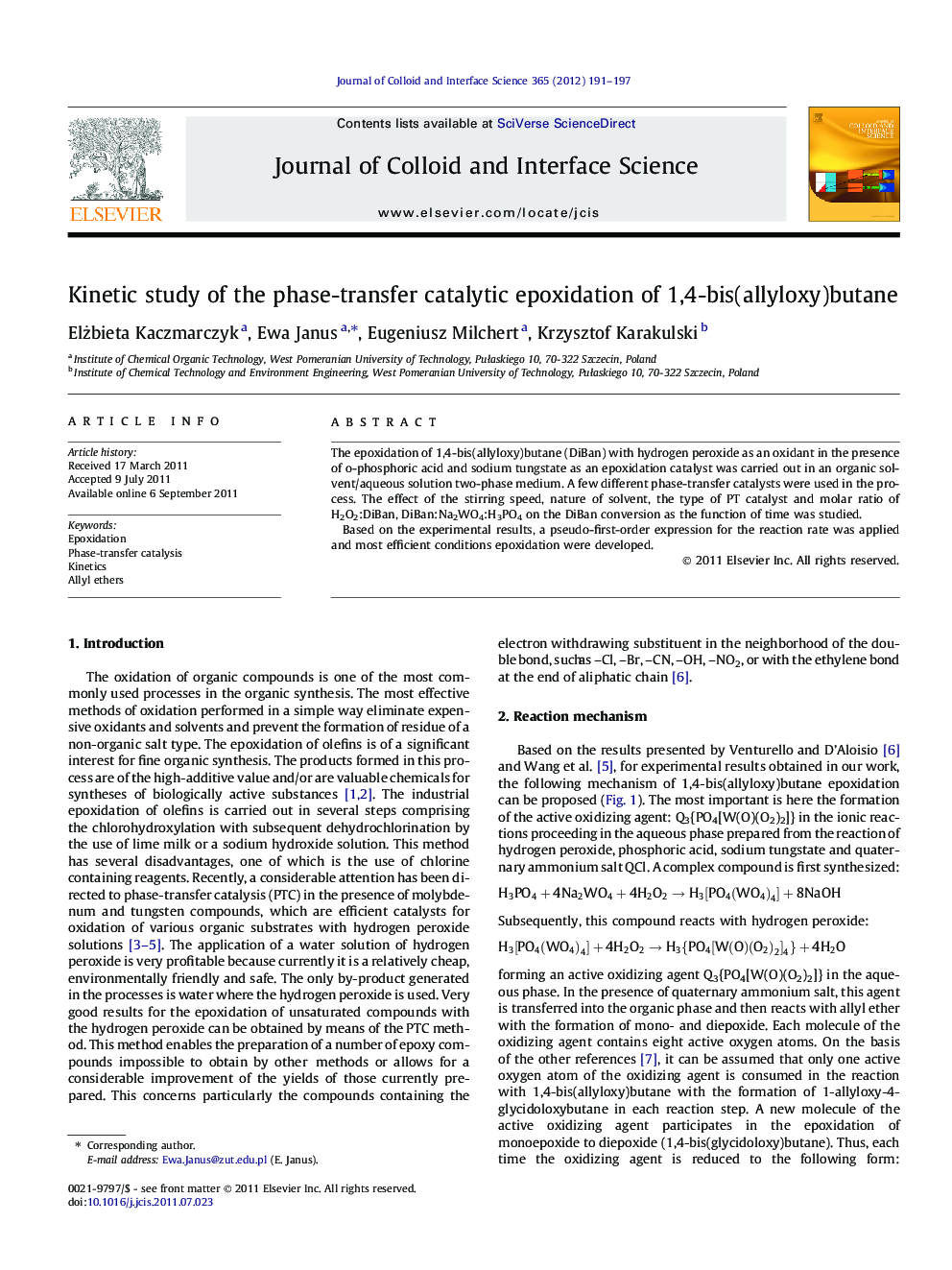| Article ID | Journal | Published Year | Pages | File Type |
|---|---|---|---|---|
| 608468 | Journal of Colloid and Interface Science | 2012 | 7 Pages |
The epoxidation of 1,4-bis(allyloxy)butane (DiBan) with hydrogen peroxide as an oxidant in the presence of o-phosphoric acid and sodium tungstate as an epoxidation catalyst was carried out in an organic solvent/aqueous solution two-phase medium. A few different phase-transfer catalysts were used in the process. The effect of the stirring speed, nature of solvent, the type of PT catalyst and molar ratio of H2O2:DiBan, DiBan:Na2WO4:H3PO4 on the DiBan conversion as the function of time was studied.Based on the experimental results, a pseudo-first-order expression for the reaction rate was applied and most efficient conditions epoxidation were developed.
Graphical abstractKinetic data of the 1,4-bis(allyloxy)butane (DiBan) epoxidation were presented. The effect of agitation speed, the nature of solvent, the type of PT catalyst and molar ratio of H2O2:DiBan, DiBan:Na2WO4:H3PO4 on the course of this reaction was described.Figure optionsDownload full-size imageDownload high-quality image (29 K)Download as PowerPoint slideHighlights► Kinetic data of 1,4-bis(allyloxy)butane epoxidation under aqueous–organic system. ► Hydrogen peroxide as an oxidant. Na2WO4·2H2O, H3PO4 and ammonium salt generate the active form of catalyst. Agitation speed, solvent and molar ratio of reagents are important to high reaction rate.
